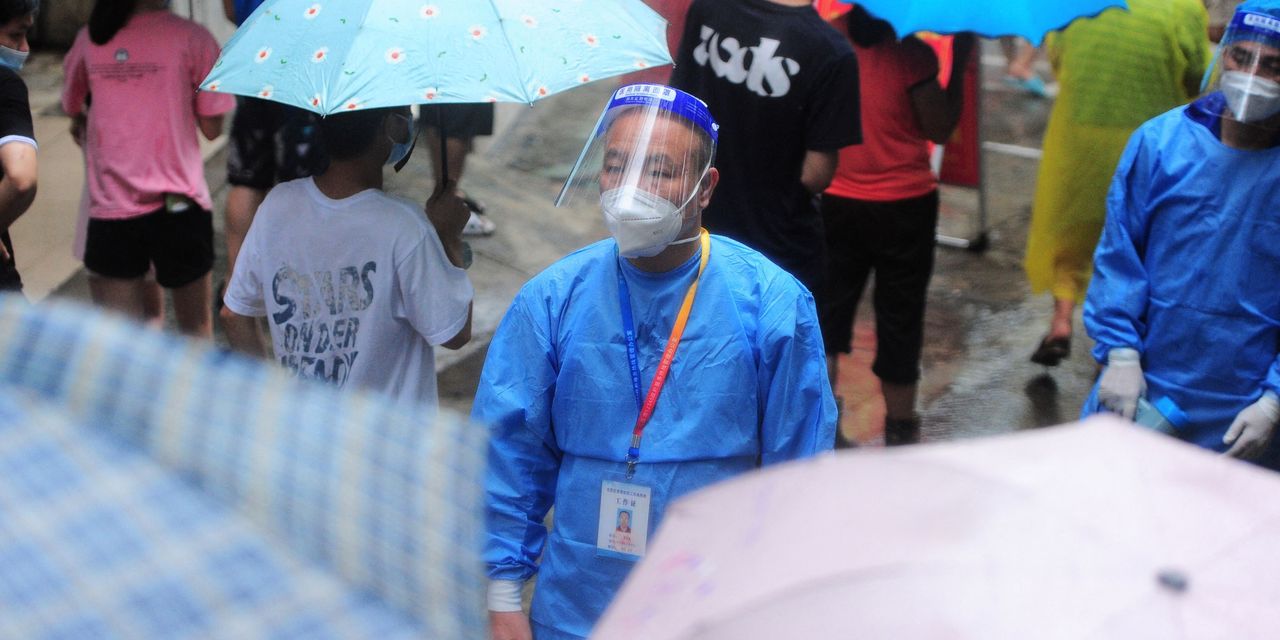President Joe Biden, after testing negative for COVID on both Saturday and Sunday, left the White House for the first time since becoming infectious last month
Biden emerged from an isolation that lasted longer than expected because of a rebound case of the virus, as the Associated Press reported.
“He will safety return to public engagement and presidential travel,” White House Physician Dr. Kevin O’Connor said in a statement.
“I’m feeling good,” Biden said before boarding Marine One outside the White House.
The Bidens spent Sunday in Rehoboth Beach, a popular vacation destination.
Biden originally tested positive on July 21, and he began taking the antiviral medication Paxlovid, developed by Pfizer
PFE,
which is intended to decrease the likelihood of serious illness from the virus. According to his doctor, Biden’s vital signs remained normal throughout his infection, but his symptoms included a runny nose, cough, sore throat and body aches.
After isolating for several days, Biden tested negative on July 26 and July 27, when he gave a speech in the Rose Garden, telling Americans they can “live without fear” of the virus if they get booster shots, test themselves for the virus if they become sick and seek out treatments.
But Biden developed a rebound case of COVID-19 on July 30, forcing him to isolate further. Paxlovid can cause cases to recur within days of a negative test, although that remains a rare outcome.
For more, see: Biden’s COVID ‘rebound’ after treatment with Paxlovid serves as a reminder that the antiviral can have that rare outcome
The daily average for new U.S. cases has continued its recent decline, although the official numbers are best treated with caution as not all data are being captured when many people are testing at home. The average stood at 117,564 on Sunday, according to a New York Times tracker, down 8% from two weeks ago.
The daily average for hospitalizations was flat at 43,375, while the daily average for deaths is up 11% to 494.
Coronavirus Update: MarketWatch’s daily roundup has been curating and reporting all the latest developments every weekday since the coronavirus pandemic began
Other COVID-19 news you should know about:
• Some 80,000 tourists have been stranded in the southern Chinese island province of Hainan after an outbreak of COVID cases led to a lockdown, the AP reported. Authorities declared the beach resort city Sanya a COVID-19 hot spot Saturday and imposed a lockdown, confining Chinese citizens and expatriates to their hotels on what they had hoped would be a holiday from tight restrictions around much of China. Tourists wanting to depart Sanya have to test negative for the coronavirus on five PCR tests over seven days. The island counted 259 COVIC cases on Saturday. China has stuck steadfastly to a “zero-COVID” policy, despite the economic and social costs.
• Hong Kong will reduce the length of mandatory hotel quarantine for overseas arrivals to three days from a week, the city’s leader said Monday, the AP reported separately. The southern Chinese city remains one of the few places in the world, together with mainland China, to require a quarantine to guard against travelers spreading COVID-19 to the local population. The policy taking effect Friday will be Hong Kong’s shortest quarantine for arrivals since the pandemic began.
• Norwegian Cruise Line Holdings
NCLH,
said Monday it will no longer require vaccinated guests at least 12 years old to show a negative COVID test, or to undertake any COVID-19–related pre-boarding protocols. Meanwhile, unvaccinated guests at least 12 years old will still have to show a negative PCR or antigen test no more than three days before they board. The cruise operator’s moves come after the Centers for Disease Control and Prevention said in July that its COVID-19 Program for Cruise Ships was no longer in effect, and that COVID-19 protocols were up to individual companies. Carnival Corp.
CCL,
and Royal Caribbean Group
RCL,
have said in late July that they were dropping COVID-19 testing requirements for vaccinated guests, for cruises of less than six nights.
• Up to $1,000 in pandemic pay is available for eligible, private-sector essential workers in Connecticut who were employed during the height of the COVID-19 pandemic, with a new website for applications up and running on Friday, the AP reported. Workers must have earned $149,999 annually or less to be eligible. The $30 million Premium Pay Program will officially kick off next week, following this weekend’s soft launch.
Here’s what the numbers say
The global tally of confirmed cases of COVID-19 topped 584.8 million on Monday, while the death toll rose above 6.41 million, according to data aggregated by Johns Hopkins University.
The U.S. leads the world with 92.1 million cases and 1,033,607 fatalities.
The Centers for Disease Control and Prevention’s tracker shows that 223.2 million people living in the U.S. are fully vaccinated, equal to 67.2% of the total population. But just 107.5 million have had a booster, equal to 48.2% of the vaccinated population, and just 20.6 million of the people 50 years old and over who are eligible for a second booster have had one, equal to 32% of those who had a first booster.
